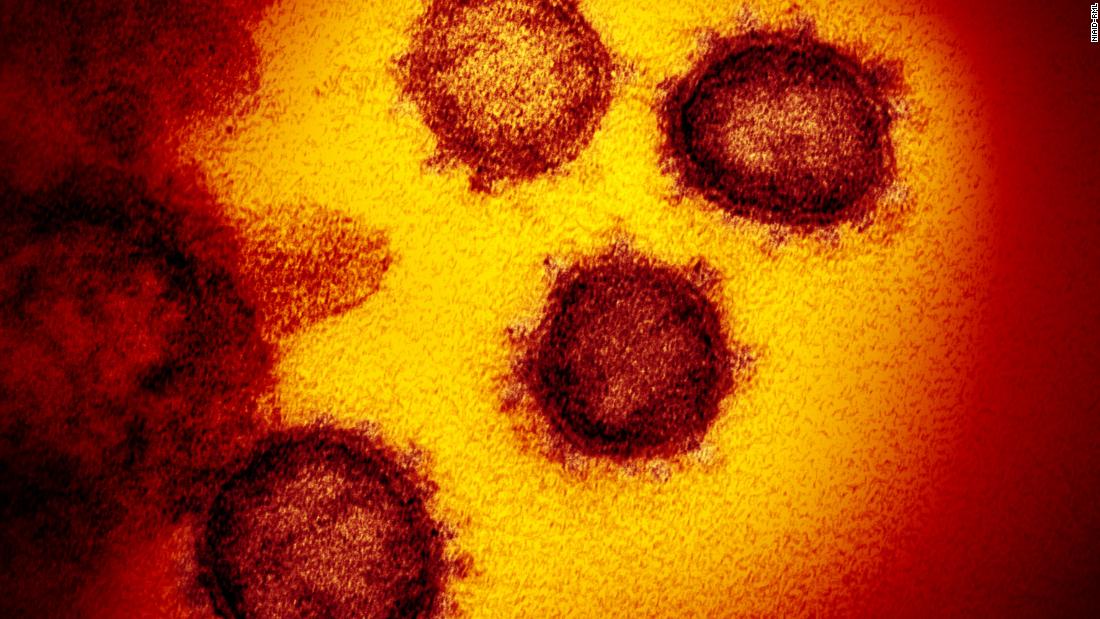You are here
Updated CDC guidance acknowledges coronavirus can spread through the air beyond 6 feet
Primary tabs
Sun, 2020-09-20 22:09 — mike kraft
 Updated CDC guidance acknowledges coronavirus can spread through the air The US Centers for Disease Control and Prevention updated guidance on its website to say coronavirus can commonly spread "through respiratory droplets or small particles, such as those in aerosols," which are produced even when a person breathes. CNN
Updated CDC guidance acknowledges coronavirus can spread through the air The US Centers for Disease Control and Prevention updated guidance on its website to say coronavirus can commonly spread "through respiratory droplets or small particles, such as those in aerosols," which are produced even when a person breathes. CNN
 Updated CDC guidance acknowledges coronavirus can spread through the air The US Centers for Disease Control and Prevention updated guidance on its website to say coronavirus can commonly spread "through respiratory droplets or small particles, such as those in aerosols," which are produced even when a person breathes. CNN
Updated CDC guidance acknowledges coronavirus can spread through the air The US Centers for Disease Control and Prevention updated guidance on its website to say coronavirus can commonly spread "through respiratory droplets or small particles, such as those in aerosols," which are produced even when a person breathes. CNN (CNN)The US Centers for Disease Control and Prevention updated guidance on its website to say coronavirus can commonly spread "through respiratory droplets or small particles, such as those in aerosols," which are produced even when a person breathes.
"Airborne viruses, including COVID-19, are among the most contagious and easily spread," the site now says.
Previously, the CDC page said that Covid-19 was thought to spread mainly between people in close contact -- about 6 feet -- and "through respiratory droplets produced when an infected person coughs, sneezes or talks."
The page, updated Friday, still says Covid-19 most commonly spreads between people who are in close contact with one another, and now says the virus is known to spread "through respiratory droplets or small particles, such as those in aerosols, produced when an infected person coughs, sneezes, sings, talks or breathes."
These particles can cause infection when "inhaled into the nose, mouth, airways, and lungs," it says. "This is thought to be the main way the virus spreads."
"There is growing evidence that droplets and airborne particles can remain suspended in the air and be breathed in by others, and travel distances beyond 6 feet (for example, during choir practice, in restaurants, or in fitness classes)," the page now says. "In general, indoor environments without good ventilation increase this risk."
Previously, CDC suggested maintaining "good social distance" of about 6 feet, washing hands, routinely cleaning and disinfecting surfaces and covering your mouth and nose with a mask when around others. ...
Now, it says "stay at least 6 feet away from others, whenever possible," and continues to direct people to wear a mask and routinely clean and disinfect. However, it also now says people should stay home and isolate when sick, and "use air purifiers to help reduce airborne germs in indoor spaces."
Masks, it notes, should not replace other prevention measures.
The update also changed language around asymptomatic transmission, shifting from saying "some people without symptoms may be able to spread the virus" to saying "people who are infected but do not show symptoms can spread the virus to others." ...
Country / Region Tags:
Problem, Solution, SitRep, or ?:
Groups this Group Post belongs to:
- Private group -



Comments
More details on CDC lastest guidance on aerosols spread
....
While the CDC has not called for any new action to address the airborne threat of a virus that has now killed nearly 200,000 Americans, experts said the change should help to shift policy and public behavior.
“It’s a major change,” Jose-Luis Jimenez, a chemistry professor at the University of Colorado at Boulder who studies how aerosols spread the virus, told The Washington Post. “This is a good thing, if we can reduce transmission because more people understand how it is spreading and know what to do to stop it.”...